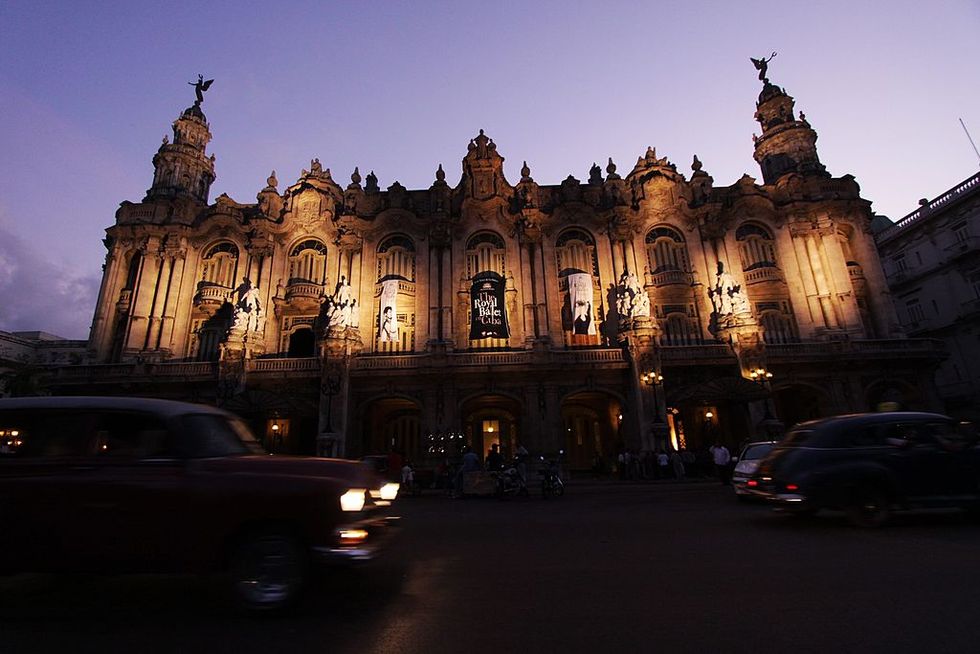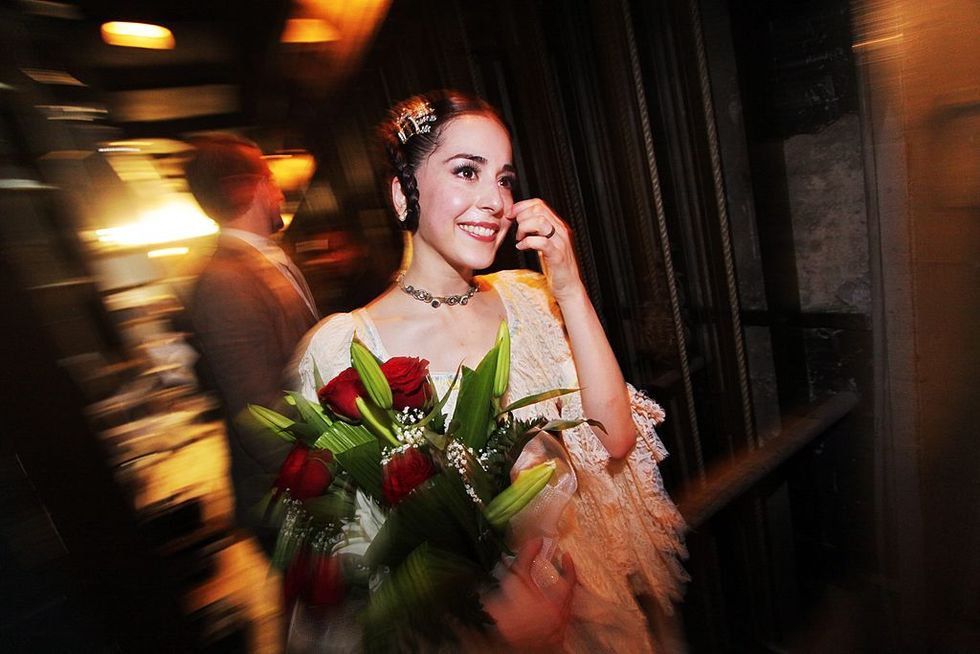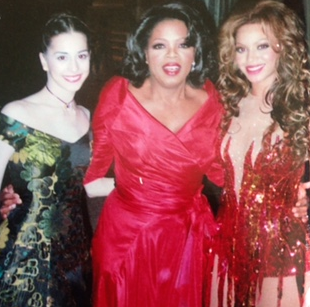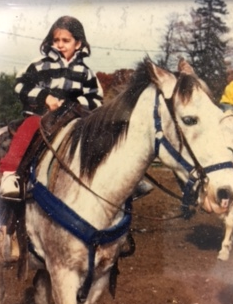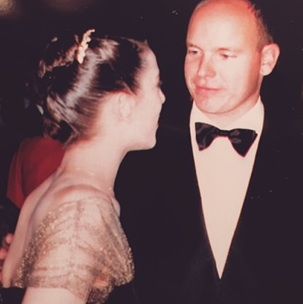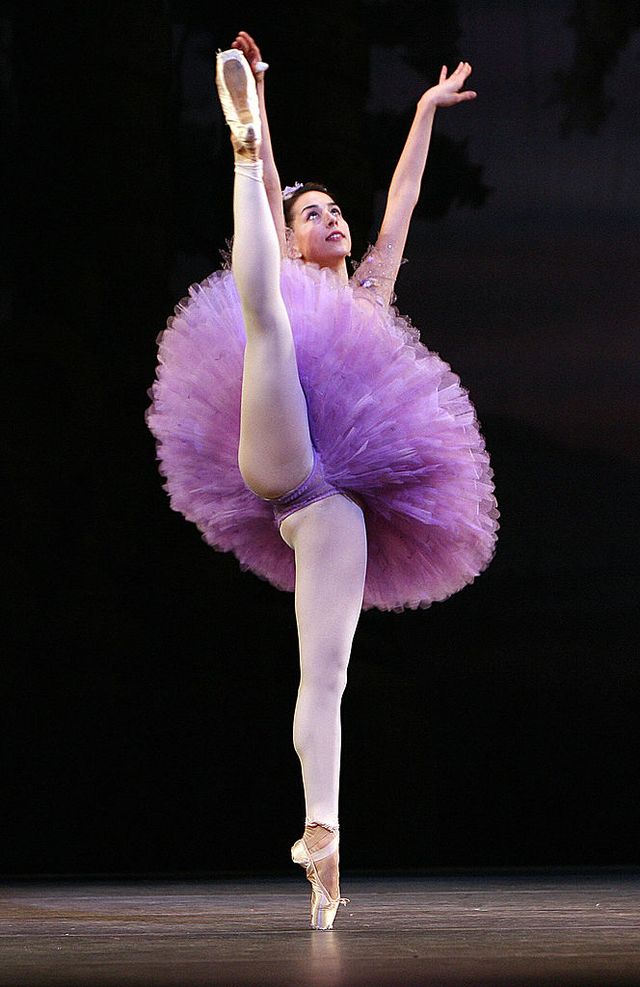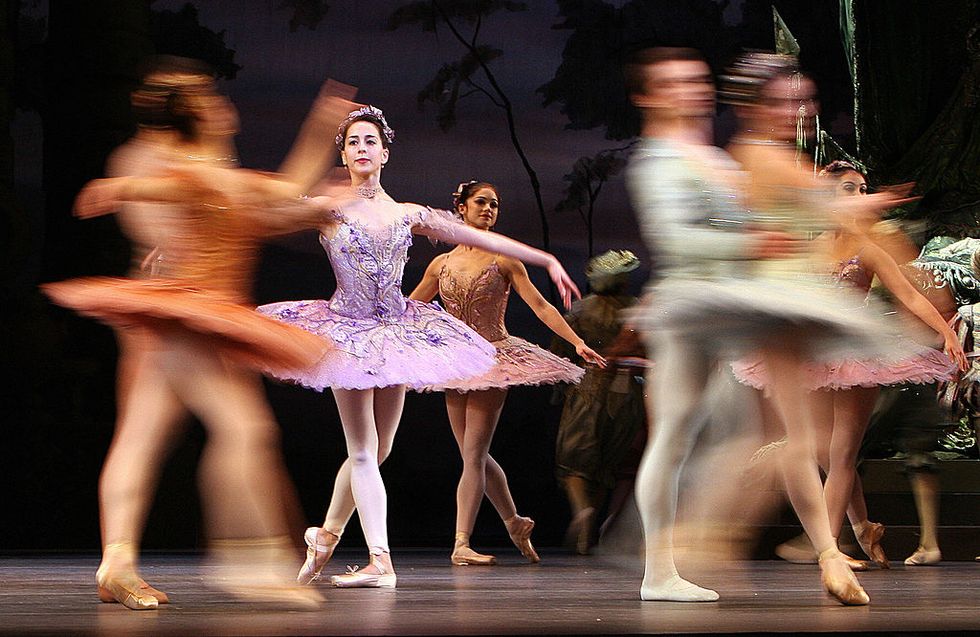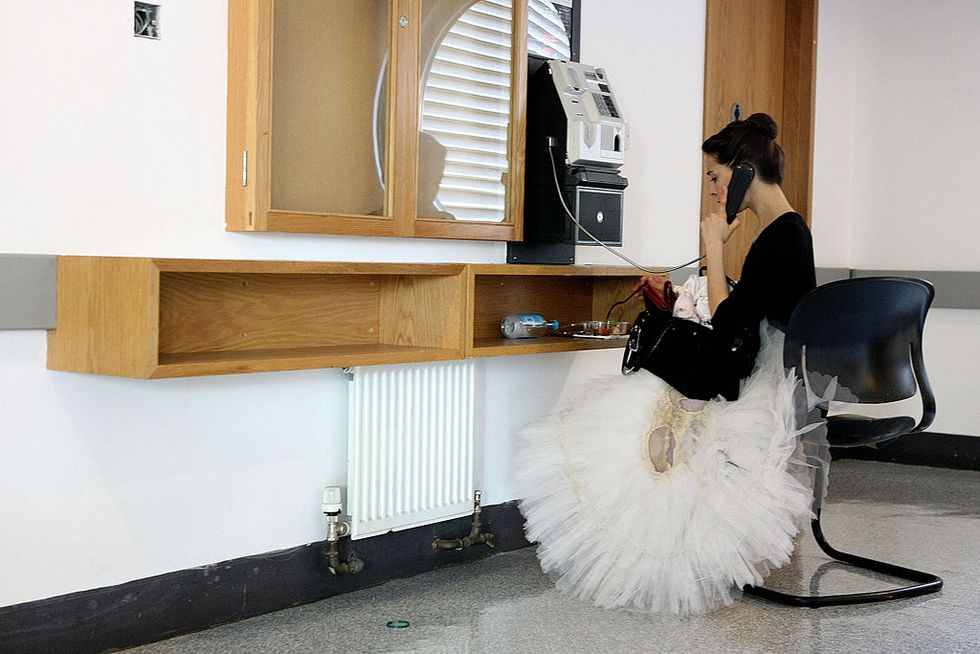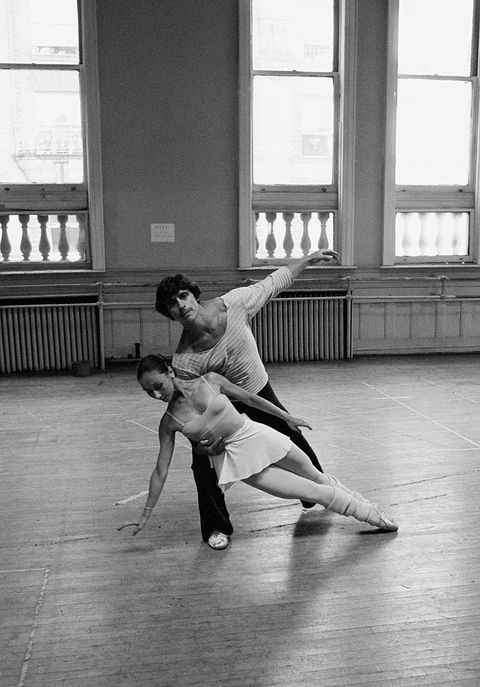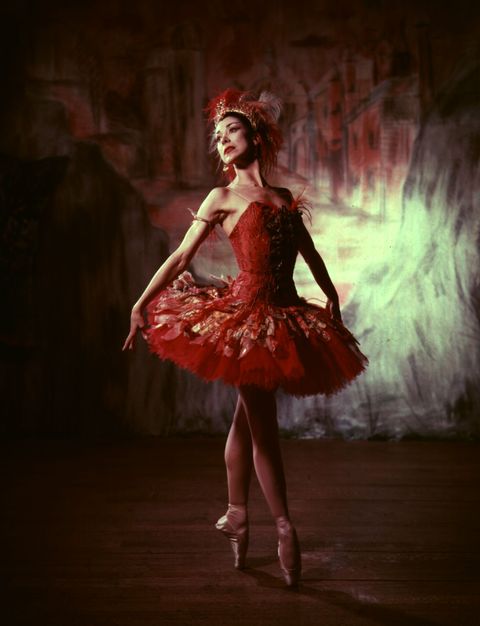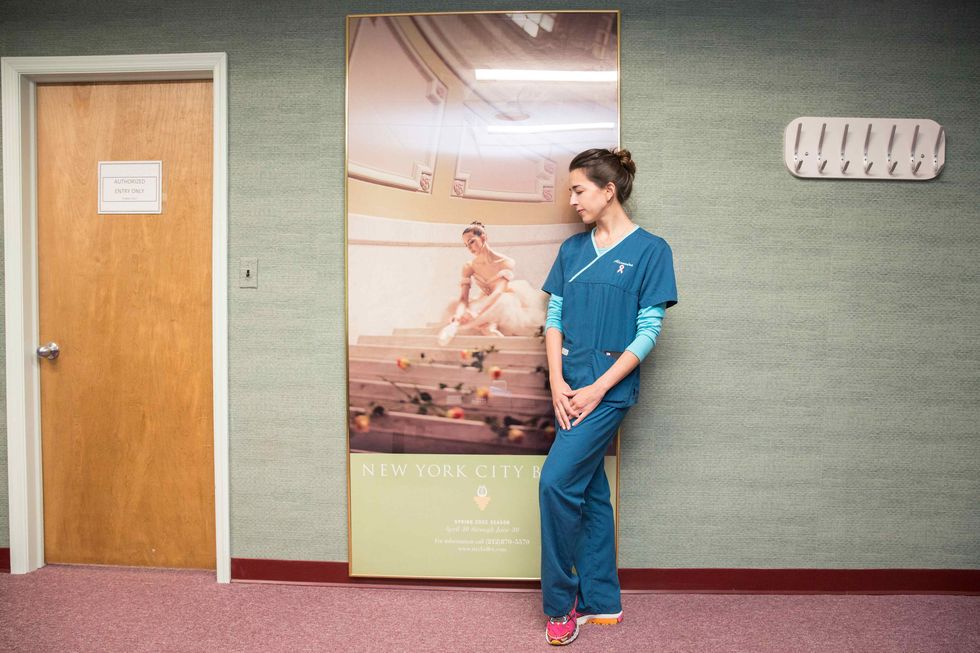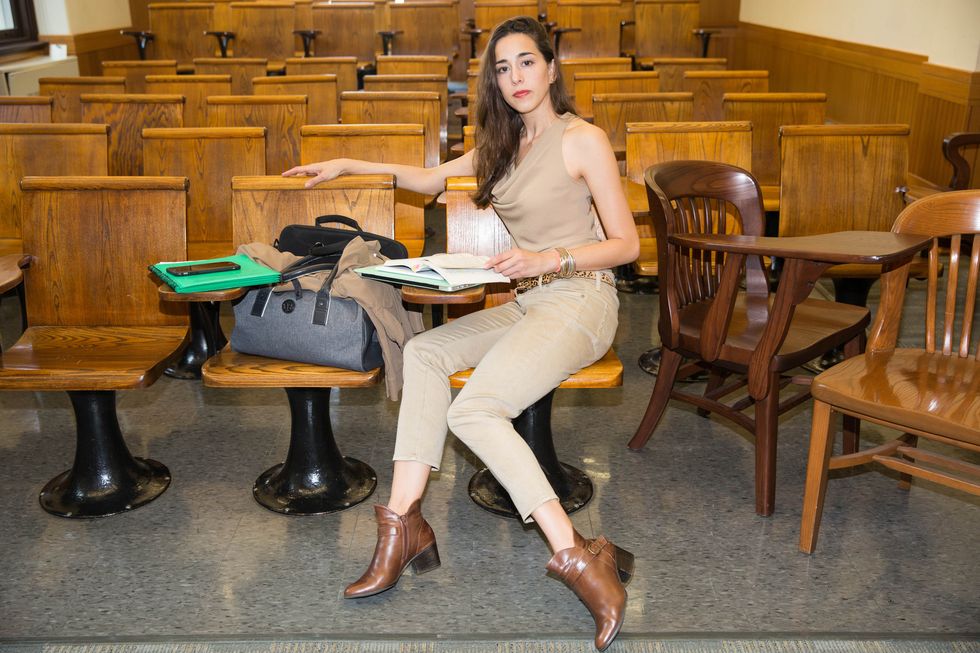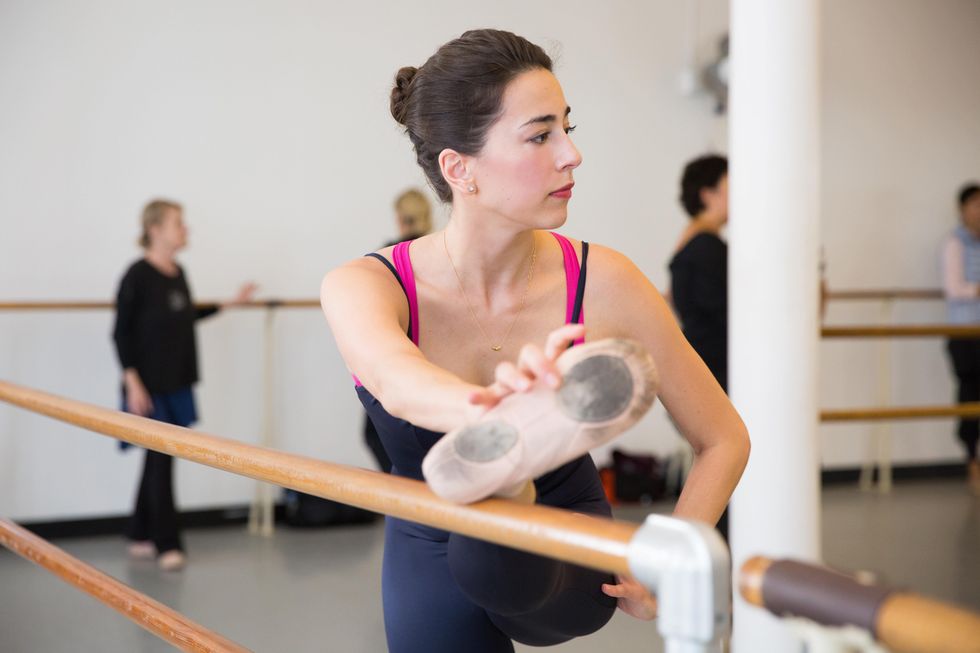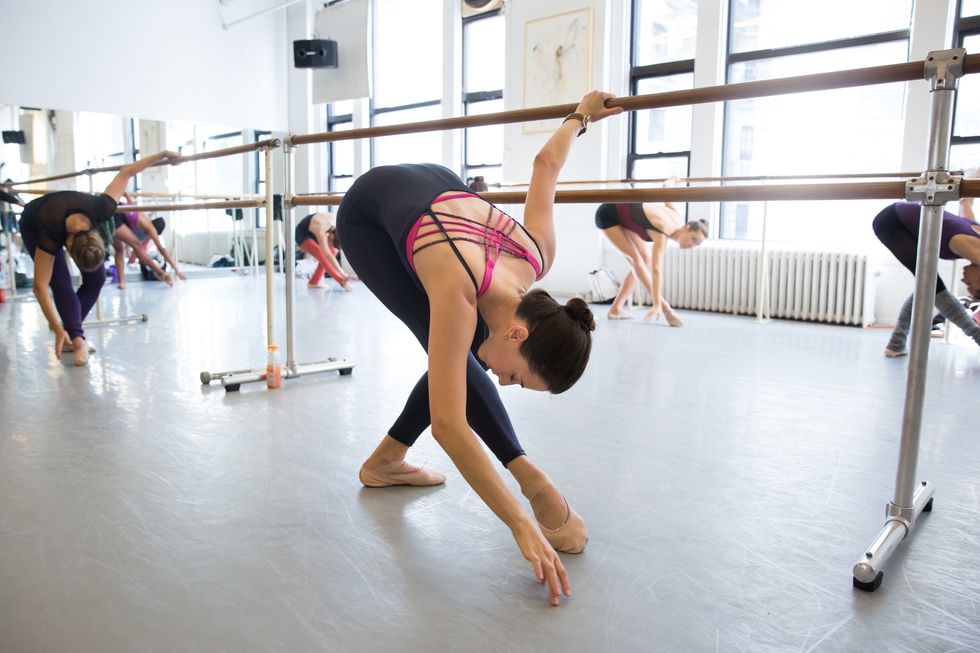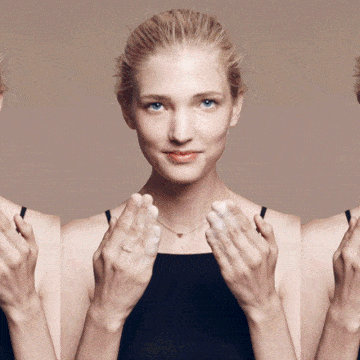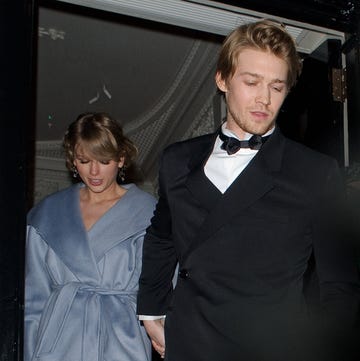It was a hot, humid Saturday night in Havana, and there was no air conditioning at the Gran Teatro. But all 1,500 seats at the old opera house were taken; tickets had sold out within hours of their release. Thousands more fans crowded onto the steps of the nearby Capitolio, braving the July heat to watch giant outdoor screens on which the performance was streaming. This was a far cry from the staid audiences the Royal Ballet usually danced for in London. Here, tickets were cheap; spectators packed picnics; the atmosphere was raucous. It was 2009, and the first visit from a major foreign ballet company in 30 years. It was also the last time that Alexandra Ansanelli, a star at the peak of her career, would perform.
"A Month in the Country," the ballet chosen for her last show, is a melodrama based on Ivan Turgenev's 1855 play. In it, Natalia, a bored housewife on a Russian estate, falls in love with her son's new tutor; so do her teenage daughter and the family maid. American audiences sometimes laugh at its over-the-top antics. But with Alexandra as Natalia, it worked.
Alexandra, who had been dancing with the Royal Ballet for three years, and with the New York City Ballet for eight years before that, was spontaneous and unpredictable onstage. She could get carried away by a feeling or a musical note. She was an artist more than a technician, and she was beautiful in a way that could seem anachronistic; she was glamorous. That night, everything came together. She put on one of the best shows of her life. "She danced like it was the last performance," said her partner that night, Ivan Putrov. "But every performance, she gave everything."
The curtain fell, and rose again. Alexandra took her bows, and the 88-year-old Cuban dancer Alicia Alonso presented her with a bouquet of roses. Alexandra broke down in tears as the crowd cheered.
After the show, Alexandra spoke to some reporters. She and a couple of other dancers went for a swim. She didn't sleep. The next day, she boarded a plane and flew back to New York.
In over half a century at the Royal Ballet, Monica Mason, the artistic director from 2002 to 2012, has witnessed many final performances. Alexandra's, she says, "was one of the most moving, and one of the most emotional." But it was also confounding to those who had watched her meteoric rise. "Why does an artist at the height of her powers walk away?" wondered Washington Post critic Sarah Kaufman. "It is hard to believe that someone like Alexandra Ansanelli…is retiring," wrote the popular blog The Ballet Bag. "It was a surprise for everyone," says Putrov.
Millions of little girls sign up for ballet classes every year; only a tiny proportion will make it as professionals, and almost none will ever achieve the sort of fame that Alexandra enjoyed. It takes "so long to train, to get to the level of a principal dancer," says Royal Ballet coach and former principal dancer Jonathan Cope. Dancers generally want to extend their careers "as long as [they] possibly can." So why would someone who had subsumed her life for her art suddenly leave it all?
Flex 30 Times While Brushing Your Teeth
I spent three years at the School of American Ballet (SAB), New York's preeminent school for aspiring ballerinas and, for older dancers, the feeder school for New York City Ballet (NYCB). I danced until the time commitment started to interfere with schoolwork, and prevented me from developing other interests; but mostly, I danced until puberty made my aspirations implausible. (SAB recognized my limits when I was 12, and kicked me out; it took me a few more years, drifting around lesser studios in New York, to concede that they were right.)
When I'm asked now how much time I spent practicing, I'll say 10 or 12 hours a week during the year, 30 or so during the summer—but that doesn't begin to cover it. Even as a not-destined-for-greatness teenage student, the rituals of ballet pervaded my daily life to a nearly religious degree. I had exercises to do while I brushed my teeth (point and flex 30 times—right foot, left foot). I had stretches to do while I read, while I watched TV. One of my teachers told me that to improve my feet, I should walk around tensing my insteps at all times. To boost my turn-out, I was ordered to walk everywhere with my feet pointing outward from the hip, like a duck.
For the truly talented, the rituals and routines are more intense. They supplement SAB classes with private coaching and summer intensives; many forgo normal education, opting for home-schooling or professional arts schools. Serious training often means emotional and financial sacrifices for the dancer's family, too. FiveThirtyEight estimated the cost of raising a ballet dancer to age 18 at $120,000 for training, pointe shoes, and audition fees.
This type of training doesn't just shape women's bodies; it shapes their psyches in often damaging ways. More than a quarter of female dance students have an eating disorder, according to a study cited by Maja Langsdorff's book Ballet—and Then? The BBC recently estimated that ballet dancers suffer from eating disorders at a rate 10 times higher than non-dancers. I remember groups of girls in leotards, crowding around the mirror and talking about which parts of our bodies we wanted to cut off. Once a girl admitted she'd been fasting all day after she fainted during an audition, and I remember being impressed.
Kids typically spend their first ballet classes rolling around on the floor or pretending to be butterflies. The dream of becoming a ballerina is just a passing phase for most—no more serious, or plausible, than wanting to be a fairy princess. For very few will the sacrifices that come with serious study ever pay off.
In my original class—the one I began when I was nine—there were two girls who were always a cut above the rest: more musical, more beautiful, more technically perfect. They were always vying for the teachers' attention, always neck-and-neck for the best roles. At 23, one is a rising star, a soloist at a world-renowned company. The other works in commercial real estate.
A Golden Future
Alexandra discovered ballet relatively late, enrolling in dance classes at the age of 11 to supplement her soccer training. But she was instantly obsessed. "When I was introduced to dance, I was fascinated by it," she tells me when we first met in 2014, for breakfast in Manhattan. Impeccably made up, her posture unimpeachable, she still carried herself like a star.
Her parents agreed to drive her in from Long Island to audition for SAB, but they urged her not to get her hopes up. "There were hundreds of girls who were doing splits and were physically gorgeous—I was not," she says. "My nickname was Ziti, because I had a dish of baked ziti after every soccer game." But the day after the audition, her mom turned up at Alexandra's fifth grade class with a bouquet of flowers. She was in.
Aspiring ballerinas typically begin their training as toddlers. For Alexandra, ballet was a game of catch-up. While her SAB classmates had been practicing pliés and tendues, she had been sprinting, kicking balls, and generally developing all the wrong muscles. Not long after she started at SAB, she was diagnosed with scoliosis: throughout her teenage years and even into her twenties, she had to wear a back brace whenever she wasn't dancing.
By age 12, she was leaving school early to make it to SAB. "I was renting studios early in the morning before my classes and rehearsing late at night with private lessons," she says. She started missing science, her favorite class. She transferred from the Friends Academy in Long Island to the more accommodating Professional Children's School in Manhattan. Her parents sold their house on Long Island and moved to Manhattan. Her father, a surgeon, reverse-commuted 90 minutes each way.
Her first big break came after a series of nerve-wracking setbacks. At 15, she was asked to repeat a level at SAB, and she was passed over for casting in the end-of-year workshop—the traditional stepping-stone to a place in New York City Ballet. She was despondent: "I had given up my world on Long Island, all my friends out there," she says. "I really just gave up life to pursue ballet."
But Peter Martins, who has run New York City Ballet since 1989, noticed something and invited her to take class with the company. It was an unspoken audition, and Alexandra passed: an offer to join New York City Ballet soon followed. Before her 16th birthday, she debuted as in The Nutcracker as Dewdrop—a role usually reserved for seasoned principles a decade older. New York Times writer Anna Kisselgoff declared her a "rare find, a dancer of nuance and originality," and anointed her a "true prodigy." Critic Clive Barnes predicted she would have a "golden future."
She did, for a while. She mastered the company's Balanchine repertoire. Martins singled her out, choreographing lead roles for her. She was promoted to soloist and, a few years later, she vaulted again over her peers and became a principal. In the hierarchy of ballet companies, this is the pinnacle—a position that a few dancers achieve after years of toil in the corps and that most never reach.
And then, seemingly without reason, she decided to leave New York. Rumors swirled: Had she had some kind of falling-out with Martins? She insisted that nothing was amiss, that their relationship remained strong, even parental. And she remained ensconced, if peripherally, in the world of ballet. She danced as a guest star in Lausanne and Milan; she performed in a Christmas Show at Madison Square Garden. Within months, she took a place at The Royal Ballet in London.
It would be another steep learning curve. She accepted a spot as a soloist—a notch below her position at NYCB. "It was a whole other caste system," she says. For the first time in years, she had to share a dressing room. Brought up in the American style of ballet, which prizes speed and distorts traditional hand and foot positions, she had to re-train in the more rigid classical technique.
But within a year, she got her promotion. She won over skeptical British critics. Just after she joined the Royal, The Guardian's dance critic criticized her for failing to match her partner's "recklessness"; three years later, the same critic praised her risk-taking, writing that "every near-slip added a delicious stamp of spontaneity to her style."
"She was outstandingly beautiful on the stage," says the Royal Ballet's Mason. Her theatricality made her fascinating to watch—even her inconsistency was appealing. "There was always great anticipation whenever she was going to dance," former principal dancer Jonathan Cope says. "You're just on the edge of your seat."
As a kid, I danced in NYCB's Nutcracker. I was onstage for only a few minutes each night, so I had plenty of time to watch the rest of the ballet. Along with the other kids, I'd huddle around a grainy monitor backstage, or, occasionally, slip into an empty seat in the theater to watch Act II. Over the course of three years, I did this more than 60 times; I saw dozens of ballerinas inhabit the lead roles. But when Alexandra came onstage as Sugarplum or Dewdrop, I held my breath. Watching her was a reminder of what was possible in ballet—and her joy was a reminder that it was all supposed to be fun.
The SAB kids had a tradition of leaving notes for our favorite dancers at the stage door reception desk. They followed a certain formula. "I loved seeing you as Dewdrop," one might begin. Or: "You are my favorite sugarplum fairy." Then they'd get to the point: asking for an autographed pair of the dancer's old shoes. Some dancers never replied, and their reputations among the children suffered accordingly. Alexandra was one of the generous ones. "Dear Alice, May all your dreams come true!" she scribbled on the toe of her old pointe shoe, two days before Christmas in 2002. Those shoes hung on my wall, next to a framed poster of Degas' "La classe de danse," for most of my childhood. I left them up long after I gave up on ballet.
My Life Was a Three-Block Radius
In the 1970s, the sunken-eyed dancer Gelsey Kirkland shot to fame as a teenage prodigy and one of George Balanchine's last muses. But she was as well known for her obsessive perfectionism and self-destructive habits as for her talent. In her memoir, Dancing on My Grave, she details a long battle with bulimia and a penchant for cocaine and amphetamines. In her quest to mold her body to a balletic ideal, she sought out multiple plastic surgeries. She underwent a nose job and an earlobe reduction. She had her ankles inflated with silicone to improve the silhouette of her leg onstage. She was Alexandra's idol.
As she was coming up at NYCB, Alexandra distinguished herself not only by her artistry, but by her devotion. When the theater didn't have any studios available for her to rehearse, Alexandra would rent space on her own—no small expense. She spent hours in the performing arts library, watching tapes of Kirkland and other past artists. After performances she'd be up all night. "I would just sit in my room and relive the show," she says. "I would visualize the whole process, every moment." The next day she "would be a floating day." She'd go to class, to rehearsal if she had to. Mostly, she would relish the exhaustion in her muscles.
Dancers typically form friendships in the corps, where they spend long hours rehearsing group dances, and where the pressure is less intense. Alexandra had skipped that stage, and she struggled to fit in at the Royal. "She was quite individual I suppose, and quite isolated," says Lauren Cuthbertson, a principal dancer who once shared a dressing room with Alexandra. "Of course she was always very glamorous—just absolutely mad as a box of frogs." "When you're committed, as you have to be as a principal dancer," says Mason, "there's very little time for private life. Friendships, everything else comes second. Alexandra was absolutely committed."
In the cutthroat world of ballet, her journey "may have been hard for others to relate to," Alexandra says. "I don't think I ever had a very deep connection to one person, because I was very involved with myself." Her fellow dancers would invite her out, Alexandra says, but she was just too focused to participate. "My life was a three-block radius," she says. In the four years she spent in England, she says, "I barely went out of the circumference of the theater and my apartment."
As she ascended in the ballet world, conventional milestones eluded her. She had danced as the romantic interest of heartthrobs like Damian Woetzel and Benjamin Millepied (now Natalie Portman's husband); with her dark hair, porcelain skin, and huge eyes, her beauty was an undeniable part of her appeal. But at 28, she had never had a boyfriend. "I really did like a lot of different people," she says. "But I was immature. I was much younger than a lot of people, and on top of that, I felt even younger."
Her favorite part of dance was "working with a man," she says. "I mean, that's what I wanted in real life too." She had her first kiss in a pas de deux, partnering Woetzel, her former teacher. She can't remember exactly how old she was—but older, she thinks, than it usually happens. "I was slower in that department."
The ballet canon is rife with melodrama and sacrifice. Giselle dies of a broken heart. Odette from Swan Lake is condemned to swim in a lake of tears. Towards the end of her career, Alexandra found herself relating to the protagonist of The Red Shoes, a young ballerina named Victoria. "I felt torn between my ballet career and the world outside ballet," Alexandra says. Victoria, torn between two suitors, throws herself in front of a train.
$5 a Day and a Sense of Emptiness
Dancers are notoriously bad at planning for their second acts. They underestimate the age at which they'll retire (the average age of retirement is 34), overestimate the amount of money they'll earn, and misjudge the forces that will end their careers. More than one-third of the dancers in a 2004 survey were driven to retirement by an injury; only 5 percent left because they actually wanted a new career. When dancers enter the workforce in their thirties, many are woefully unprepared. Only 3 percent of current dancers say that teaching dance is their preferred post-retirement line of work, but it's the most common fate: 53 percent end up teaching dance in some capacity.
"We know of no other occupation that requires such extensive training, that is held in such esteem as a contribution to culture, and that pays so little," the authors of the 2004 survey write. Even during peak earning years: in the U.S., an average dancer's annual total income is just $35,000—about half of which comes from non-dance activities. Even stars might not earn much more, or find themselves better equipped for life on the outside. After his body gave out in his late thirties, Edward Villella—a star at New York City Ballet in the 1950s and '60s, who had danced for four presidents—lived for a while on $5 a week.
For a dancer, retirement is far more than a professional turning point. It can trigger a loss of identity, even an existential crisis. Sixteen percent of ex-dancers in the study cited a "sense of emptiness" as their greatest challenge. Some stay close to dance, looking for administrative or technical work in the theater; others shun their former lives completely. Margot Fonteyn died on a cattle farm in Panama, where, visitors noticed, she kept few souvenirs of her 40-year career.
"I've seen the same story over and over, repeating itself," says Alexandra's old partner, Putrov. The end comes "very abruptly, and usually not by their choice." (Still dancing at 36, Putrov is diligently laying the groundwork for a second career in arts production.) "As a dancer you spend most of the day in the studio rehearsing and performing, and suddenly this is gone from your life. It's a tragedy, it's a vacuum."
In her 2006 book, German journalist Maja Langsdorff—a dancer who turned to writing after a car accident terminated her own ballet career—interviewed 27 former ballet dancers about how they coped with the loss of their livelihood. "The question of whether there is life after dance is a taboo," Langsdorff writes. The subject of life after dance is off-limits. To leave an insular world is a threat to those who remain: it's a reminder that there are options on the outside, an insult to those who stick it out.
Langsdorff tells of dancers who fall into a depression, who lose their sense of purpose. "Solo careers can end at the receptionist's desk or sitting in the ticket office, or, more tragically, they can lead to alcoholism and suicide," she writes. "Studies report drug abuse and a high rate of attempted suicides after injuries." When 21-year-old Sophie, as she's identified in the book, realized that a torn ligament was going to end her career, she lay in bed for five days. "I simply did not get up, and was somehow waiting that I would die," she told Langsdorff. "I don't have anything but ballet." Veronika, 23, had neither a high school diploma nor any professional prospects when she met Langsdorff. In fact, the young woman had little to show for a lifetime of devotion but a serious foot injury and a lingering eating disorder. "I was always fighting to become a dancer," she said. "And now it is all gone and I don't know why I should fight, or what I could fight for."
Two Bodies
If Alexandra had been lucky, she might have had a few more good years. Principal dancers who avoid injury can extend their careers well beyond the average. NYCB principal Wendy Whelan danced through her mid-40s. Her peer Darci Kistler retired at 46. But in quitting at a high point—uninjured, still young—Alexandra gave herself the chance to work on the areas of her life that she'd neglected.
Most days, Alexandra drives from the Upper West Side apartment she shares with her parents to her father's medical practice on Long Island, where she works as the director of operations and communications. When she arrives at the office, she is greeted by a stark reminder of her past life: a Royal Ballet poster of her in a long, pink tutu, posing in pointe shoes on a staircase. It's a romantic image: Her eyes are cast demurely downward; her face is heavily made up, with scarlet lipstick and pearl studs in her ears. Long-stemmed, yellow-and-pink roses are scattered along the stairs. The poster occupies most of one wall of the waiting room of her father's medical practice. Occasionally, a patient makes the connection between the graceful, quietly glamorous woman in turquoise scrubs and the movie-star beauty in the picture.
When Alexandra first got back to New York, she took ballet classes every day; she toyed with the idea of going back to dance. Meanwhile, she enrolled in the General Studies program at Columbia University―she's been in and out of classes at Columbia for seven years―and told The New York Times she might study business. It was a belated adolescence of sorts. She relished in once-forbidden pleasures: rich food, pedicures, free time. "When you're let out of the cage you're like, 'Oh my god, I'm gonna eat this, I'm not gonna do that,'" she says. She gained weight. She started going to the gym.
As she began paying more attention to her father's work, she felt herself being pulled in a different direction. Vincent Ansanelli is one of only a few surgeons offering laser breast cancer surgery―performing mastectomies without submitting women to general anesthesia or hospitalization―and Alexandra has made a place for herself at his practice, promoting his work and helping him manage patients. "When I retired from ballet, this is the last thing I thought I was gonna be involved with," she says. "But after I started to hear more about" his work, "I just thought, I've got to be a part of this. I would have serious guilt to society...if I didn't do my utmost to see this through." Still, the "real world" moves at a slower pace than the one she grew accustomed to in her ballet career. "I was always on the go. I'm not good at waiting."
At 35, Alexandra has only recently come to a realization that most of us are forced to reckon with much, much earlier: "You can try to do everything right and it still may not work." Though she spends many of her days in an office, she says she's not an office person. Learning to communicate verbally has been a challenge. "I didn't realize how introverted I was. I had been so used to emoting silently and physically." Nonetheless, she is seemingly ahead of many of her peers. She is aware of the limitations that her career imposed, and actively working to overcome them.
When I ask her how her personal life has changed, she answers, "It exists now." But it's hard to catch up on everything her peers went through as teenagers and young adults. "I feel I'm learning all the time, what to do, what not to do." She worries about what new acquaintances will think of her past. "It's freaky to a lot of people," the way she left her career. "Did she have some kind of mental breakdown?" she imagines they wonder.
She wants a serious relationship; both of her sisters are married. She's tried Tinder and recently joined Bumble. For obvious reasons, she doesn't like the apps that make you fill in your whole biography. Does she miss her old life—the drama, the spotlight? "I don't think real life has enough glamour," she says. But she also says that she doesn't think glamour is "enough to base your life on."
She wishes she could bring the emotional maturity she's gained only recently to the characters she used to dance. "I was uptight," she realizes now. "When you've really loved, you get less uptight." Still, she wouldn't change her decision. "I wish I had two bodies," she says, "so that I could have continued."
Alice Robb is writing a book about the science of dreams.

